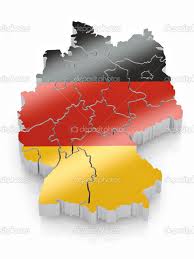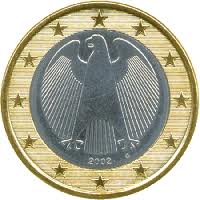Essen
The red light district of Essen, the Stahlstraße, dates from about 1900, at which time it was called Heilig-Geist-Strasse and lay in the "traditional" working-class district of Segeroth. This was a former meadow area for cattle which from the 1840s onwards was converted, within a few decades, into an "inner-city" area with the establishment of the new coal-mining industry and steel industry.
Today, the greater part of Segeroth has been taken over by the University.
Stahlstraß borders on the former Krupp area, and a few nearby buildings still stand from this era. A workshop was converted into the Colossum Theater and IKEA use some other buildings. Krupp was established just outside the city gates, more precisely the Limbeck gate, where now stands the Limbecker Platz shopping center.
An old railway behind Stahlstraße (the Reichsbahn) has been converted into a cycle path, which is planned to eventually form part of a long-distance route through the center of the Ruhr District from Duisburg to, I think, Dortmund.
For pictures of this area, go to photos of Essen
History
The new times were ushered in with the establishment around 1840 of "Mathias", one of the first Mergel mines in the Ruhr area.
The new industries, especially Krupp, ended up enticing workers from far afield. Between 1860 and 1873 the population tripled to over 56,000 . To meet these new requirements in the last third of the 19th. century, an unplanned, high-density development of houses for rent and industrial concerns sprang up.
Segeroth was the area with the highest-density and the lowest average living quality in Essen. But next to groups on the "margin" (incl. Eastern Jews, Sinti and Gypsies, prostitutes) the area was also the residence of highly-qualified (and higher wage-earning) craft workers with Krupps. Business people and small businesses settled in Segeroth, so that a middle-class milieu developed along Segerothstra?e.
Politically Segeroth was for decades a stronghold of the socialist movement. Initially, the Social Democrats had been able to establish themselves as the strongest party in Segeroth. In the 1920s the KPD (Communist Party) rose to dominance. Towards the end of Weimar Republic, the NSDAP (Nazis) were able to become the second-largest party behind the KPD. The bloody confrontations between the 'Reds' and the 'Browns' are still legendary to this day and determined for a long time the reputation of Segeroth as a violent and riot-torn area.
After their take over, the Nazis began their "cleansing" of the Segeroth quarter. Apart from their renovations, the Nazis introduced a decidedly racist and political tone into the area as well. And while the construction work moved on a fairly slow pace, the Nazis carried through their political and racial "cleansing" a lot more efficiently., so that by the end of the war, Segeroth was "free" of communists, gipsies and jews..
The construction part of the "cleansing" was finally completed automatically by the wide-scale destruction brought about by the bombing during March of 1943.. Until the fist sod was cut in October 1972 for the building of Essen University, Segeroth remained a devastated area with "rubbish, ruins, isolated houses", in which the remaining inhabitants lead a life under "temporary arrangements". The building of the University has changed the face of Segeroth considerably. Today only a few have memories of "Essen's wild northern area". The mines and Krupp's industrial concerns are long gone. Only a few "cliques" have managed to survive - and the prostitutes in the Stahlstraße.
Review of a theater piece
The Essener Theater is letting the myth of an old workers' district live again – in order to destroy it in the next moment. An exciting trip through our own history
30 000 workers vegetated in small rooms, in barracks, without running water, within spitting distance of their workplaces in Krupps. Spontaneous festivals on the streets, tricksters, rag and bone men, prostitutes. Communists had held the area said one. when Hitler came, the inhabitants had placed their piss pots in front of the door and not given him a second glance. National Socialists were there say others. When Hitler marched in, everyone had frantically applauded, a guard of honor formed by a moving sea of upraised arms.
Segeroth a workers district in the center of Essen, destroyed by the Second World War and then torn down during the 60's, was occupied by many people. What was life there really like? The Swiss theater group "Schauplatz International" have dedicated themselves to a search after the myth of segeroth. The Essener Theater has allowed the much-distinguished group to re-write a piece of the town's history anew. In February, the Ensemble which had only been formed in the previous autumn, created a storm with a project outside the Theater It let youngsters from the poor district of Katernberg relate their own stories. And now the history of the legendary Segeroth in the shadow of Krupp's iron foundries is to be staged. .An exciting piece which had nothing in common with a comfortable evening in red velvet seats.
The audience atke part in an expedition into the history of a working-class district as they existed in practically all industrial the first half of the twentieth century. The Essen Safari begins, naturally, in a bus. equipped with telescopes, theatre guests sit jammed into together like tourists, tour guide Olaf makes the history come to life with a few pictures. To the left, the FC Kappes Stadium, to the right the corner bars, the mosque, the rectory, the red-light street. It seems almost that as though Segeroth can only be circled and not actually reached anymore, as there you have the desolate square, a concrete desert bordering a grown-over strip of green and the university.
The audience, victims of their own curiosity, climb out of the bus, gather together in the cool evening air by the shoulder-high wall, in order to observe the expedition troops. Ironic tales of adventure sound out from the tent, researchers excitedly run around the fire. You want to find out about the true history, the only true, authentic history. From a few buses come indeed a few former inhabitants : a professor of history, a worker, a social educationalist. But their rememberances are too unexciting for the sensational expedition, so the original inhabitants disappear into a kiosk and from then on can only be observed having coffee, and not heard.

